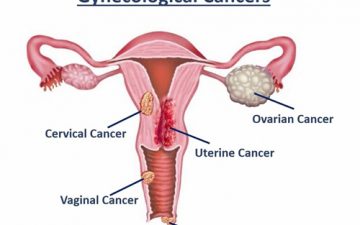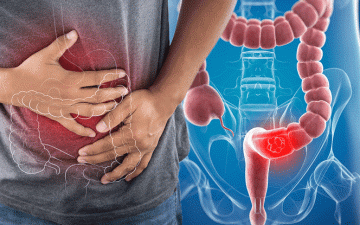Cancer is characterized by uncontrolled growth of abnormal cells at the cost of normal body cells. It slowly eats up the space occupied by and nutrition meant for normal cells thus hampering the normal structure and function of the body. Only those tumors that have the propensity to spread from one place to the other are called cancer.
Certain normal cells, through a process of multiple alterations in their genes, acquire capability of uncontrolled and rapid growth. This autonomous cell is a cancer cell that continues to multiply resulting in growth and spread of cancer.
Cancer is commonly perceived as a death sentence. However, most cancers can be cured if detected at an early stage. In this section we will talk about some myths around cancer, frequently asked questions related to cancer and more information about some common cancers.
There are certain known risk factors that facilitate formation of cancer. These could be a) Lifestyle related (smoking, tobacco, supari, pan masala, alcohol, unhealthy diet, lack of exercise and obesity etc.), b) Environment & Occupation related – Pollution, Occupational exposure to certain chemicals (e.g. Asbestos), c) Certain infectious agents – Hepatitis B and C for liver cancer, Human Papilloma Virus (HPV) for cervical, penile and some throat cancers, d) Genetic predisposition – forms only a small part of all cancers. In spite of above knowledge, there are many cancers of which exact cause is not known.
Certain tumors grow at one place and do not have capacity to spread to other parts – they are known as benign tumors. While others have a propensity to spread to other areas apart from growing locally – these are malignant tumors or Cancers.
These cells start growing at a place and slowly gain access to lymphatic channels and blood vessels to travel to other parts of the body. Once they find conducive environment at another place they make it their second home. This could be a lymph node in close vicinity or an organ far away from the primary site of tumor. Similarly, they travel to many other places making them their homes !! These deposits are known as secondaries or metastases
Most of the cancers are staged from I-IV depending upon the extent of local and distant spread. In general, when it is localized to the site of origin, it’s usually first or second stage. Involvement of lymph nodes in close vicinity could be second or third stage. When it spreads to distant organs then it becomes stage four. Some cancers like breast and cervix (mouth of uterus) also have a very early stage called Stage 0 with nearly 100 percent cure.
A large number of cancers can be prevented by adopting healthy lifestyle. Avoiding tobacco alone can prevent 40-50 % of cancers. However, not all cancers can be prevented. The next best thing is to detect them early.
Being aware of warning symptoms and participating in regular screening for certain cancers helps in early detection. Also see articles on Cancer Screening (PROVIDE LINK) and Early signs & Symptoms of cancer (Provide Link). Certain body parts also allow us to self examine e.g. breast, mouth, skin and report any abnormal finding to the doctor for further evaluation.
Screening is widely practiced and recommended for certain cancers like Breast, Cervix and large intestine (colon & rectum). When to start and how frequently to perform screening tests depends upon the type of cancer and the degree of risk for an individual to develop that cancer. See article – Signs & Symptoms (LINK)
There are various methods of treating cancer depending upon the type and stage of cancer. Most of the solid cancers (e.g. Breast, intestine, uterus, oral cavity etc) need surgical treatment and many of them would also need chemotherapy (in form of injections or tablets) and radiation therapy. Certain cancers like breast and prostate may need hormone therapy also. Certain targeted therapies are also used that target specific biological processes going on in cancer cells. Certain cancers like blood cancers are treated mainly with chemotherapy and bone marrow transplant.
Cancer cannot spread from one person to another even if a raw / ulcerated area is touched with bare hands. However, certain infections like hepatitis B and C and human papilloma virus can be transmitted from one person to the other and can be a cause of cancer in the long term
Chemotherapy (whether targeted or non-targeted) are medicines given mostly by injections and sometimes orally as well to kill cancer cells. They have the potential to kill normal body cells also which results in their side-effects. Injectable ones can be given directly into the veins of arm or through a device called chemoport placed under the skin of upper chest and connected to a large vein.
It is a form of strong and concentrated x-rays and can be delivered through various techniques. The more precise ones have the potential to deliver higher dose and minimize side-effects.
Every treatment has some or the other side-effects and cancer treatment is no exception. Your doctor would weigh the pros and cons of a particular treatment before recommending it. Its best to understand these from the concerned doctor before starting treatment. This helps in decision-making and taking adequate precautions to prevent them or detect them early so that timely and adequate treatment can be instituted.
Almost 90-95% of cancers are not hereditary and cannot be passed on from one generation to the other. Some cancers are associated with certain genetic mutations that can be passed on to offsprings and need special screening as well as testing
It is a very common misconception that touching the cancer with knife or needle makes it spread like wild-fire. Biopsy (whether by needed or open) is needed for diagnosis of most cancers and does not cause spread of cancer. Similarly, complete surgical removal of cancer does not affect the outcome adversely. There are a few cancers where we do not do biopsy and straightaway perform surgery to remove them as they are surrounded by a capsule and it is not advisable to breach the capsule e.g. Kidney, Testis
There is a lot of interest and publicity around alternative therapies for cancer. Unfortunately, none of them are proven scientifically to cure the cancer. Quite often, patients resort to alternative medicine as the only form of therapy thus delaying the most effective treatment and letting the cancer grow beyond the stage of potential cure.
Most of the cancers do not cause pain in the initial stages thus leading to ignorance of other symptoms like lump, bleeding etc. A few cancers like bone cancer, leukemia may cause pain in the bones even at earlier stages. The most common cause of moderate to severe pain in cancer is invasion of surrounding nerves that carry sensation. This usually happens at a relatively advanced stage. Even the severest of pain due to cancer can be dealt with very effectively and no patient should be allowed to suffer from pain.
Some notions about cancer – its origin, spread and treatment are deeply ingrained in people’s mind. However, many of them do not have a scientific basis. Believing such unproven information may lead to delay in cancer detection and treatment or even wrong treatment. These are some of the common myths about cancer.
Some common cancers are listed below, click on the image to know more about them.
I have a full section of Awareness Talk Videos that covers my talks on topics like ill effects of tobacco, how we can quit it, myths around cancer, on different types of cancers. To watch the Awareness Talk Videos, click here.



